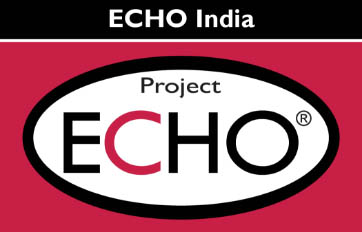One of the world’s oldest recorded diseases, leprosy, or Hansen’s disease, continues to remain a significant public health challenge, primarily in parts of Southeast Asia and Africa. It is caused by Mycobacterium leprae, a tropical mycobacterial infection that affects skin, nerves, and nasal mucosa—a tissue that lines our nasal cavity. [1]
Some of its common symptoms include persistent skin lesions, such as bumps, lumps, or sores; muscle weakness, nose bleeding and/or congestion; loss of sensation in skin; and eye problems like inflammation and bleeding. Despite common myths, leprosy is not communicable through casual contact like hugging or shaking hands. Instead, it is believed to be transmissible through close and repeated contact with an infected person’s respiratory droplets. [2]
Leprosy’s greatest challenge, however, isn’t the disease itself but the social discrimination it perpetuates. Those affected often face social isolation, rejection from their families, job loss, and more, resulting in low self-esteem, anxiety, and even depressive symptoms. This stigma and fear, coupled with socio-economic barriers, further prevents patients from seeking a diagnosis and getting proper treatment–leading to preventable disabilities like chronic ulcers, deformities of the hands or feet, blindness, and severe nerve damage.
The mental and physical facets of leprosy are so closely intertwined that addressing it requires a multi-faceted approach, one that combines medical intervention with social change.
While India achieved the elimination of leprosy as a public health concern—defined as less than one case per 10,000 population by WHO—in 2005, the country still accounts for over 50% of the new global cases. The disease is primarily endemic in pockets across Chhattisgarh, Jharkhand, Bihar, Maharashtra, Odisha, Punjab, and Madhya Pradesh. [3]
To address this and achieve complete leprosy eradication, the government has been implementing various initiatives under the National Leprosy Elimination Programme (NLEP). This has been followed by a strategic roadmap introduced in 2023, which aims to achieve zero leprosy transmission by 2027 while promoting early detection, prevention, and awareness. [4]
The government is also providing free-of-cost access to multi-drug therapy (MDT) treatment for leprosy in all parts of the country. Although the MDT regimen has been largely effective in curing leprosy [5] and reducing incidences, barriers such as lack of awareness, inadequate training of healthcare personnel, and the surrounding social stigma hinder its widespread impact.
To effectively address the dual challenge of managing leprosy and combating stigma, capacity-building must be a cornerstone of national efforts like NLEP. Here’s why:
- Supports healthcare providers to identify symptoms, provide timely treatment, and counsel patients while addressing their own biases.
- Educates communities about the causes, treatment, and non-communicable nature of leprosy post-treatment to dispel misconceptions.
- Ensures robust diagnostic and treatment facilities at the primary level, ensuring early detection and management.
- Promotes support by demonstrating that leprosy is treatable and those affected can lead normal, healthy lives.
Through collaborations with state governments and departments, ECHO India is supporting the National Leprosy Elimination Programme (NLEP) by building the capacities of healthcare workers, including district leprosy officers and consultants, medical officers, paramedics, physiotherapists, auxiliary nurse midwives (ANMs), and Community Health Officers (CHOs).
ECHO enables medical professionals in remote areas to connect with specialists, exchange knowledge, and adopt best practices for leprosy care. The learning sessions focus on key aspects of leprosy, such as clinical diagnosis, reaction management, sensitization, disability prevention, medical rehabilitation, mental health screening, and more.
This World Leprosy Day, we reaffirm our commitment to creating a leprosy-free India. The theme for 2025, “Unite, Act, and Eliminate Leprosy,” serves as a powerful reminder that eradicating the disease requires collective effort. As we move toward this goal, it is crucial to remember that leprosy elimination extends beyond curing infections; it is also about restoring dignity, and hope to those affected.
Together, through awareness and action, we can ensure access to knowledge, resources, and community support, so every individual receives the care they need!
Sources:
[1] ScienceDirect: Mycobacterium leprae
[3] & [4] Press Information Bureau: NLEP
